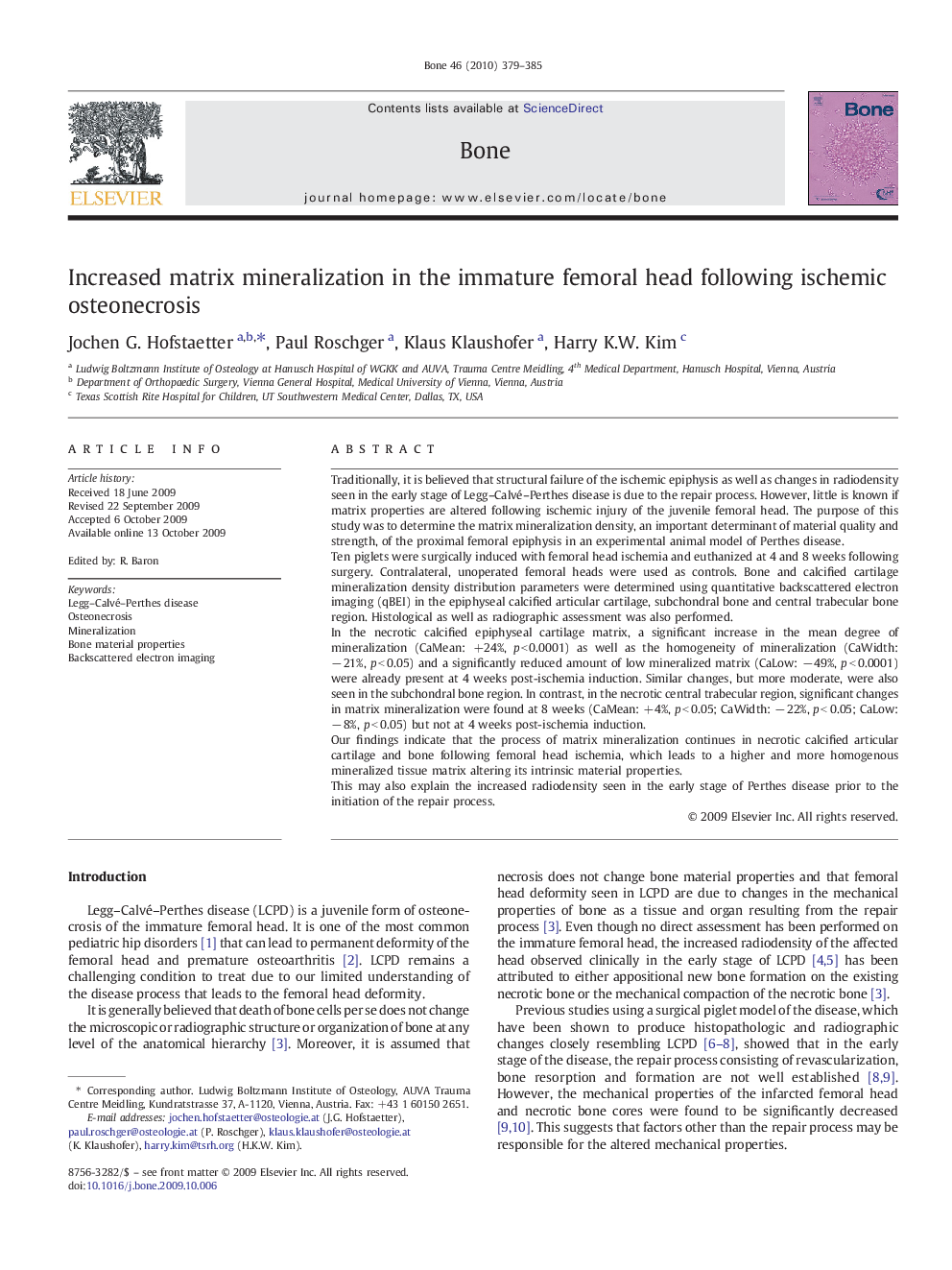| کد مقاله | کد نشریه | سال انتشار | مقاله انگلیسی | نسخه تمام متن |
|---|---|---|---|---|
| 5892459 | 1153323 | 2010 | 7 صفحه PDF | دانلود رایگان |

Traditionally, it is believed that structural failure of the ischemic epiphysis as well as changes in radiodensity seen in the early stage of Legg-Calvé-Perthes disease is due to the repair process. However, little is known if matrix properties are altered following ischemic injury of the juvenile femoral head. The purpose of this study was to determine the matrix mineralization density, an important determinant of material quality and strength, of the proximal femoral epiphysis in an experimental animal model of Perthes disease.Ten piglets were surgically induced with femoral head ischemia and euthanized at 4 and 8 weeks following surgery. Contralateral, unoperated femoral heads were used as controls. Bone and calcified cartilage mineralization density distribution parameters were determined using quantitative backscattered electron imaging (qBEI) in the epiphyseal calcified articular cartilage, subchondral bone and central trabecular bone region. Histological as well as radiographic assessment was also performed.In the necrotic calcified epiphyseal cartilage matrix, a significant increase in the mean degree of mineralization (CaMean: +24%, p < 0.0001) as well as the homogeneity of mineralization (CaWidth: â 21%, p <  0.05) and a significantly reduced amount of low mineralized matrix (CaLow: â 49%, p <  0.0001) were already present at 4 weeks post-ischemia induction. Similar changes, but more moderate, were also seen in the subchondral bone region. In contrast, in the necrotic central trabecular region, significant changes in matrix mineralization were found at 8 weeks (CaMean: +4%, p <  0.05; CaWidth: â 22%, p <  0.05; CaLow: â 8%, p <  0.05) but not at 4 weeks post-ischemia induction.Our findings indicate that the process of matrix mineralization continues in necrotic calcified articular cartilage and bone following femoral head ischemia, which leads to a higher and more homogenous mineralized tissue matrix altering its intrinsic material properties.This may also explain the increased radiodensity seen in the early stage of Perthes disease prior to the initiation of the repair process.
Journal: Bone - Volume 46, Issue 2, February 2010, Pages 379-385